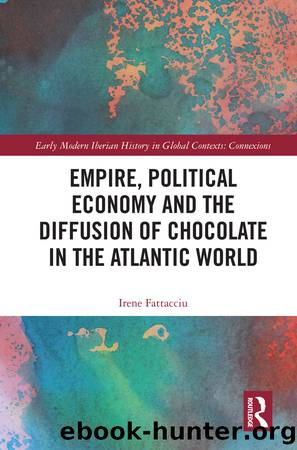Empire, Political Economy, and the Diffusion of Chocolate in the Atlantic World by Irene Fattacciu

Author:Irene Fattacciu [Fattacciu, Irene]
Language: eng
Format: epub
ISBN: 9781032174730
Google: Q0SRzgEACAAJ
Publisher: Taylor & Francis Group
Published: 2021-09-30T16:15:46+00:00
4âBourbon Reformism, Public Debate and New Forms of Sociability (1730sâ1790s)
Siamo tutti coinvolti â¦, noi tutti esseri umani, da sempre desideranti. Golosi, avidi, impazienti, vogliamo almeno la pace, se possibile la felicità , comunque il benessere. Le cose ci sembrano brillare del loro potere di appagamento. Quindi noi bramiamo cose. Vogliamo guardarle, toccarle, gustarle, annusarle, ascoltarle ⦠possederle.1
Although in the eighteenth century, chocolate continued to be an object of interest for clerics, doctors, intellectuals and the public, the debate evolved and took on different features within the framework of eighteenth-century debates about economic growth and luxury. If the newness and consequent rarity of colonial products had been their distinguishing characteristic in the seventeenth century, in the course of the following century, the development of new forms of luxury and fashion and the ability of national economies to absorb them were central to the Enlightenment debate over the nature of social progress, which occupied a large part of the literature on the subject.
As the century advanced, the contrast between those who wished for and those who condemned the differentiation of consumer goods was replaced by a greater rationality and appeal to moderation. By focusing on the different levels at which Bourbon reformism intervened on the development of the debate on luxury, the chapter explores how the authorities created and modeled the physical contexts in which new forms of sociability and consumption met, as well as dictated the most appropriate forms for each social status and gender, with particular attention paid to the role of medicine in this process.
Indeed, Bourbon reformism and the proliferation of medical and social texts regulating consumption had the aim and the effect of not only normativizing consumption but also fueling and promoting it. In this process, the role of the dominant classes, among whom a taste for colonial products like chocolate was widespread, became that of sponsoring these products and showing how they were to be consumed, obviously in their maximum splendor. New cultures of consumption were created on the basis of new practices that reflected a process of appropriation on the part of consumers, conditioned by geography, gender, social status and religious conviction.
By exploring the juxtaposition of, and contrast between, its various social definitions, it becomes possible to reconstruct a very detailed picture of the process through which products were manipulated to match different consumers, as well as to understand the role played by chocolate in the diffusion of luxury and in opening up the way for other sumptuary consumer goods. The focus on consumer practices in terms of âperformanceâ (the rituals of consumption), rather than exclusively in terms of results (how much and what was consumed), would help to understand if and why chocolateâs success helped fuel the taste for novelty and undermined the socially hierarchical models of consumption imposed by various sumptuary legislation.
Download
This site does not store any files on its server. We only index and link to content provided by other sites. Please contact the content providers to delete copyright contents if any and email us, we'll remove relevant links or contents immediately.
Harry Potter and the Goblet Of Fire by J.K. Rowling(3041)
Never by Ken Follett(2879)
Shadow of Night by Deborah Harkness(2718)
Ogilvy on Advertising by David Ogilvy(2682)
Zero to IPO: Over $1 Trillion of Actionable Advice from the World's Most Successful Entrepreneurs by Frederic Kerrest(2392)
The Man Who Died Twice by Richard Osman(2297)
Machine Learning at Scale with H2O by Gregory Keys | David Whiting(2289)
Book of Life by Deborah Harkness(2263)
How Proust Can Change Your Life by Alain De Botton(2261)
My Brilliant Friend by Elena Ferrante(2223)
0041152001443424520 .pdf by Unknown(2220)
The Tipping Point by Malcolm Gladwell(2204)
How to Pay Zero Taxes, 2018 by Jeff A. Schnepper(2098)
Will by Will Smith(2041)
Purple Hibiscus by Chimamanda Ngozi Adichie(1981)
Hooked: A Dark, Contemporary Romance (Never After Series) by Emily McIntire(1957)
Borders by unknow(1785)
Rationality by Steven Pinker(1764)
Daughter of Smoke and Bone by Laini Taylor(1742)
